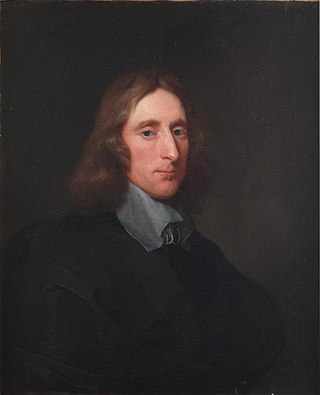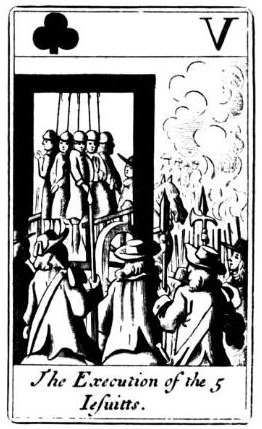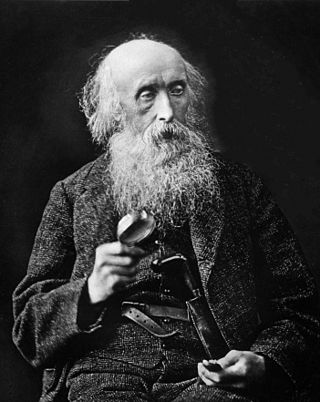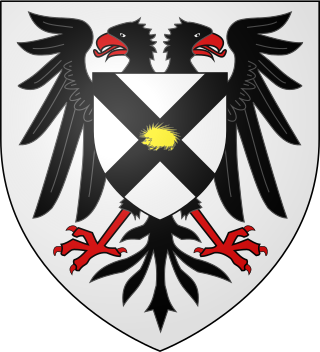Related Research Articles

The year 1300 (MCCC) was a leap year starting on Friday in the Julian calendar, the 1300th year of the Common Era (CE) and Anno Domini (AD) designations, the 300th year of the 2nd millennium, the 100th and last year of the 13th century, and the 1st year of the 1300s. The year 1300 was not a leap year in the Proleptic Gregorian calendar.

Richard Cromwell was an English statesman, the second and final Lord Protector of the Commonwealth of England, Scotland and Ireland and the son of the first Lord Protector, Oliver Cromwell.

Charles II was King of Scotland from 1649 until 1651 and King of England, Scotland, and Ireland from the 1660 Restoration of the monarchy until his death in 1685.

Caerlaverock Castle is a moated triangular castle first built in the 13th century. It is located on the southern coast of Scotland, eleven kilometres south of Dumfries, on the edge of the Caerlaverock National Nature Reserve. Caerlaverock was a stronghold of the Maxwell family from the 13th century until the 17th century, when the castle was abandoned. It was besieged by the English during the Wars of Scottish Independence, and underwent several partial demolitions and reconstructions over the 14th and 15th centuries. In the 17th century, the Maxwells were created Earls of Nithsdale, and built a new lodging within the walls, described as among "the most ambitious early classical domestic architecture in Scotland". In 1640 the castle was besieged for the last time by the Protestant Covenanter army and was subsequently abandoned. Although demolished and rebuilt several times, the castle retains the distinctive triangular plan first laid out in the 13th century. Caerlaverock Castle was built to control trade in early times.

General John Churchill, 1st Duke of Marlborough, 1st Prince of Mindelheim, 1st Count of Nellenburg, Prince of the Holy Roman Empire, was an English soldier and statesman. From a gentry family, he served as a page at the court of the House of Stuart under James, Duke of York, through the 1670s and early 1680s, earning military and political advancement through his courage and diplomatic skill. He is known for never having lost a battle.

George Grenville was a British Whig statesman who served as Prime Minister of Great Britain, during the early reign of the young George III. He served for only two years (1763-1765), and attempted to solve the problem of the massive debt resulting from the Seven Years' War. He instituted a series of measures to increase revenue to the crown, including new taxes and enforcement of collection, and sought to bring the North American colonies under tighter crown control.

John Arbuthnot FRS, often known simply as Dr Arbuthnot, was a Scottish physician, satirist and polymath in London. He is best remembered for his contributions to mathematics, his membership in the Scriblerus Club, and for inventing the figure of John Bull.

George Monck, 1st Duke of Albemarle KG PC JP was an English soldier, who fought on both sides during the Wars of the Three Kingdoms. A prominent military figure under the Commonwealth, his support was crucial to the Restoration of Charles II in 1660, who rewarded him with the title Duke of Albemarle and other senior positions.

The Popish Plot was a fictitious conspiracy invented by Titus Oates that between 1678 and 1681 gripped the kingdoms of England and Scotland in anti-Catholic hysteria. Oates alleged that there was an extensive Catholic conspiracy to assassinate Charles II, accusations that led to the show trials and executions of at least 22 men and precipitated the Exclusion Bill Crisis. During this tumultuous period, Oates weaved an intricate web of accusations, fueling public fears and paranoia. However, as time went on, the lack of substantial evidence and inconsistencies in Oates's testimony began to unravel the plot. Eventually, Oates himself was arrested and convicted for perjury, exposing the fabricated nature of the conspiracy.

Martin Lister was an English naturalist and physician. His daughters Anne and Susanna were two of his illustrators and engravers.

John Hutton Balfour was a Scottish botanist. Balfour became a Professor of Botany, first at the University of Glasgow in 1841, moving to the University of Edinburgh and also becoming the 7th Regius Keeper of the Royal Botanic Garden Edinburgh and Her Majesty's Botanist in 1845. He held these posts until his retirement in 1879. He was nicknamed Woody Fibre.
William Charles Wells was a Scottish-American physician and printer. He lived a life of extraordinary variety, did some notable medical research, and made the first clear statement about natural selection. He applied the idea to the origin of different skin colours in human races, and from the context it seems he thought it might be applied more widely. Charles Darwin said: "[Wells] distinctly recognises the principle of natural selection, and this is the first recognition which has been indicated".

Francis Godolphin, 2nd Earl of Godolphin,, styled Viscount Rialton from 1706 to 1712, was an English courtier and politician who sat in the English and British House of Commons between 1695 and 1712, when he succeeded to the peerage as Earl of Godolphin. Initially a Tory, he modified his views when his father headed the Administration in 1702 and was eventually a Whig. He was a philanthropist and one of the founding governors of the Foundling Hospital in 1739.
Sir Conyers Darcy or Darcey,, of Aske, near Richmond, Yorkshire, was a British Army officer, courtier and Whig politician who sat in the House of Commons between 1707 and 1758.

The Monro of Fyrish family were a Scottish family and branch of the ancient highland Clan Munro. The family produced a notable dynasty of doctors to London in the 18th and 19th century where they were involved in early work on curing 'insanity'. Four generations occupied successively the position of (Principal) Physician of the notorious Bethlem Hospital (Bedlam). They were also leading members of a variety of important medical associations. Other members were painters, priests and philanthropists of note and one was an important early patron to J. M. W. Turner.

Sir William Paddy (1554–1634) was an English royal physician.

Sir Andrew Halliday, KH was a Scottish physician, reformer, and writer.

Robert Maxwell, 1st Earl of Nithsdale, was a Scottish nobleman. He succeeded his brother as 10th Lord Maxwell in 1613, and was created Earl of Nithsdale in 1620. General of Scots in Danish-Norwegian service during the Thirty Years' War. A loyal supporter of Charles I and a prominent Catholic, he lost his titles and estates in 1645, dying on the Isle of Man in 1646.
Sir William Johnstone, 2nd Baronet of Sciennes and Westerhall was a Scottish landowner and politician who sat in the Parliament of Scotland from 1698 to 1707 and in the British House of Commons between 1707 and 1722.
Dr William Lauder Lindsay FRSE FLS LRCS was a Scottish physician and botanist. As a physician he largely worked in the field of mental health. As a botanist he specialised in lichens.
References
- ↑ "HUTTON, John II (d. 1712), of Caerlaverock, Dumfries and St. Clement's, Westminster". History of Parliament Online. Retrieved 13 September 2016.
 This article incorporates text from a publication now in the public domain : Goodwin, Gordon (1891). "Hutton, John (d.1712)". In Lee, Sidney (ed.). Dictionary of National Biography . Vol. 28. London: Smith, Elder & Co. p. 356.
This article incorporates text from a publication now in the public domain : Goodwin, Gordon (1891). "Hutton, John (d.1712)". In Lee, Sidney (ed.). Dictionary of National Biography . Vol. 28. London: Smith, Elder & Co. p. 356.